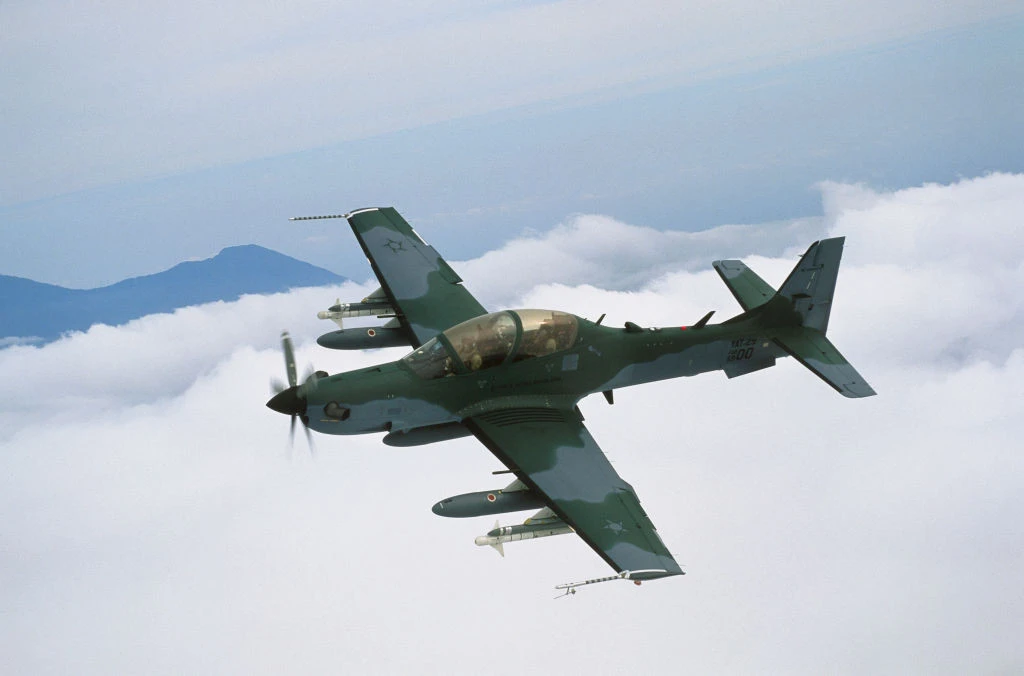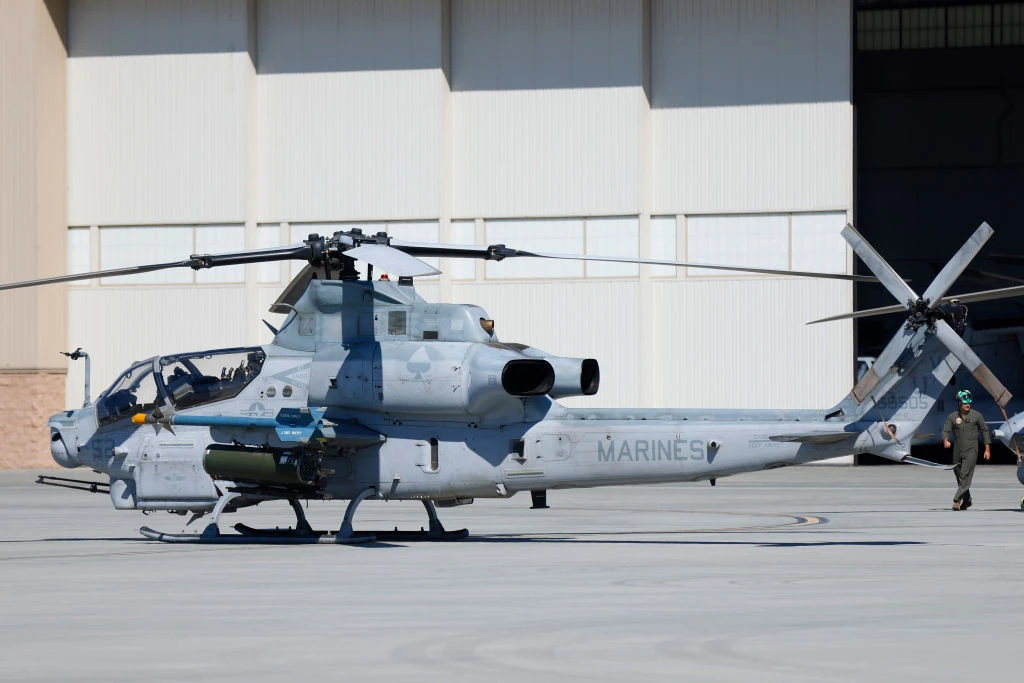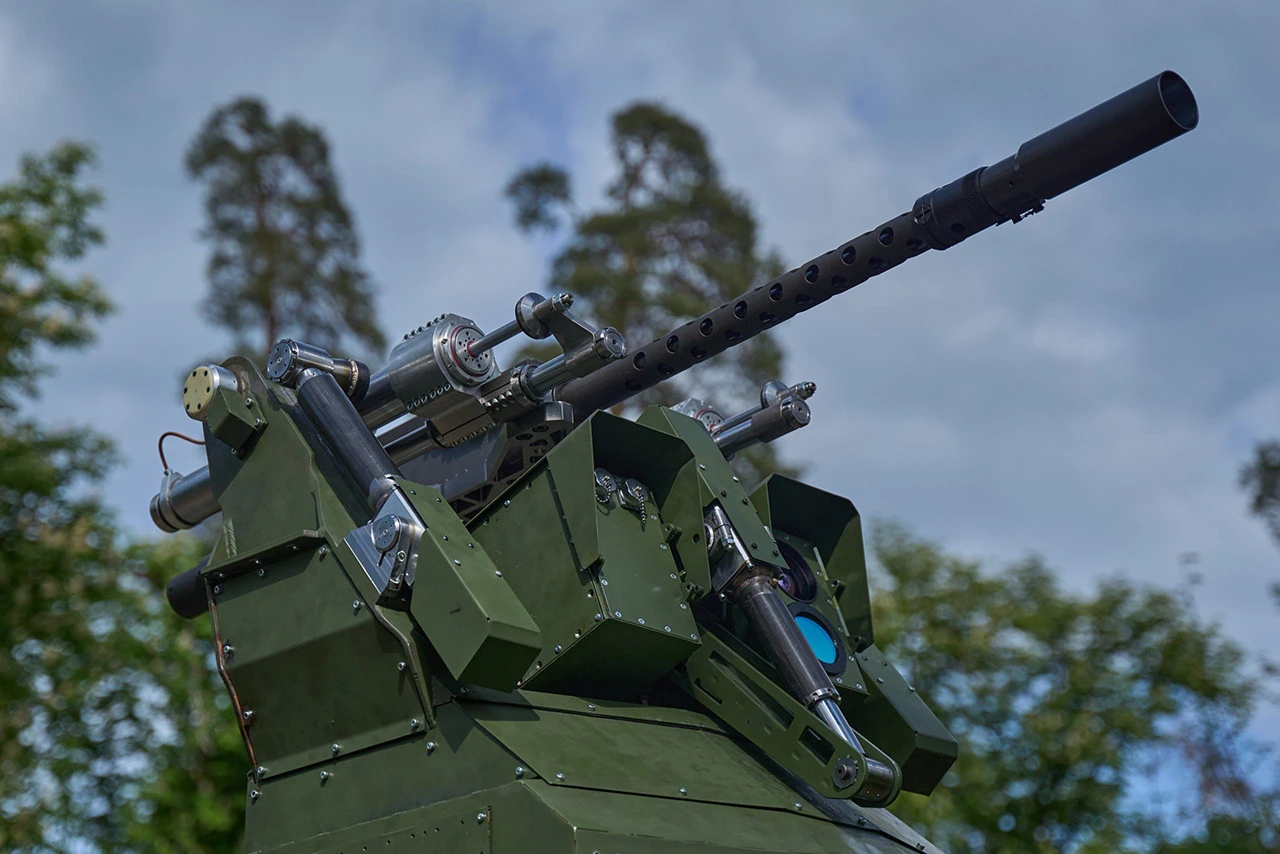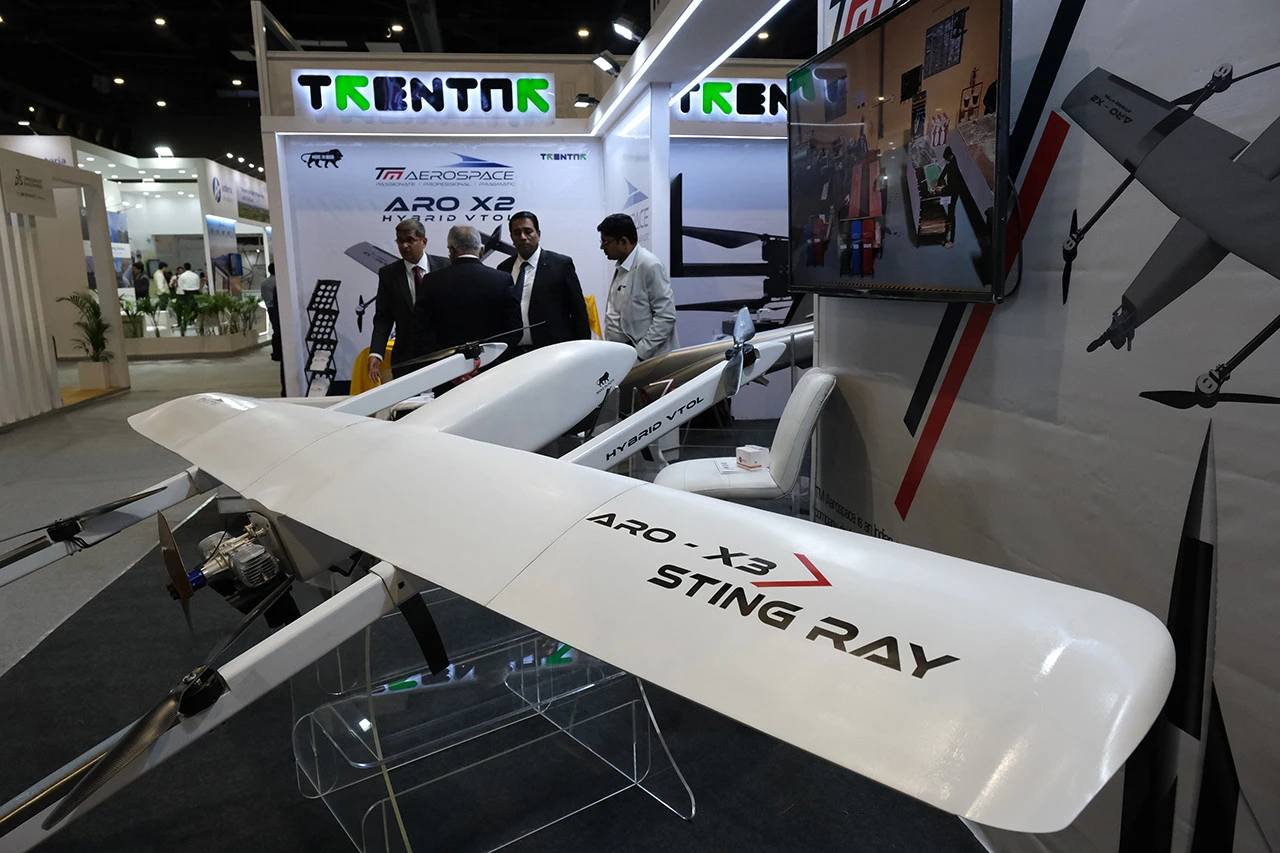How to defend Ukraine’s skies from Shahed drones: solutions exist, but time is running out
global.espreso.tv
Mon, 30 Jun 2025 20:25:00 +0300

ContentsLight aircraft and helicopters: pros, cons, and costsInterceptor drones, turrets, artificial intelligence, and moreBuilding a multi-layered and unified integrated systemNecessary steps to create the systemFor the third year, Ukraine has been resisting an unprecedented aggressive campaign by the Russian Federation, where one of the main tools of terror has become the Shahed 'kamikaze' drones (developed by Iran and mass-produced by Russia under the name Geran-2 and its modifications).According to the latest information from the President of Ukraine, Volodymyr Zelenskyy, in June 2025 alone, Russia carried out 2,736 attacks on Ukraine using Shahed-type drones. In total, since the beginning of the full-scale aggression, the Russian army has used 28,743 such UAVs against Ukraine. But even these numbers are already outdated. Every night, Russia attacks Ukrainian cities with hundreds of strike drones. According to the Defense Intelligence of Ukraine, Russia produces up to 170 Shaheds and decoy drones per day, and by the end of the year, Russian drone production may increase to 190 units per day.Their mass deployment, low cost, and psychological impact have become a challenge even for the most technologically advanced air defense systems. In response, the Ukrainian defense system has begun to transform, gradually shifting from passive defense to active countermeasures, particularly through the use of new means of destruction and drone interception.Light aircraft and helicopters: pros, cons, and costsUkraine’s Defense Minister Rustem Umerov recently confirmed that Russia is increasingly using combined attacks: launching Shaheds, ballistic missiles, and cruise missiles simultaneously. The Kremlin’s goal is clear—to exhaust Ukraine’s air defense and achieve breakthroughs by oversaturating detection and response channels. Under these conditions, traditional air defense systems like IRIS-T or NASAMS lose their effectiveness as tools for mass destruction of cheap targets. Once again, Ukraine must look for asymmetric, cost-effective solutions to create an effective next-generation air defense model.  Such solutions do exist, and discussions about them have been ongoing for more than a year. For example, one promising direction is the use of light aircraft for patrolling and destroying Shaheds. The turboprop Embraer EMB 314 Super Tucano (A-29) is considered one of the most suitable options. Its relatively low operating cost, ability to stay airborne for long periods at low speeds, and the possibility of being equipped with cannons and air-to-air missiles make it an optimal choice for air patrols. Potential analogs include the Hürkuş (Turkey), KAI KT-1 Woongbi (South Korea), Pilatus PC-9 (Switzerland), and T-6 Texan II (USA). All of them have limitations, such as lower combat payload and insufficient electronics for night or adverse conditions, but they could potentially be adapted for round-the-clock combat duty with appropriate upgrades.
Such solutions do exist, and discussions about them have been ongoing for more than a year. For example, one promising direction is the use of light aircraft for patrolling and destroying Shaheds. The turboprop Embraer EMB 314 Super Tucano (A-29) is considered one of the most suitable options. Its relatively low operating cost, ability to stay airborne for long periods at low speeds, and the possibility of being equipped with cannons and air-to-air missiles make it an optimal choice for air patrols. Potential analogs include the Hürkuş (Turkey), KAI KT-1 Woongbi (South Korea), Pilatus PC-9 (Switzerland), and T-6 Texan II (USA). All of them have limitations, such as lower combat payload and insufficient electronics for night or adverse conditions, but they could potentially be adapted for round-the-clock combat duty with appropriate upgrades.  At the same time, there is ongoing public and private discussion about the broader use of helicopters, which have already proven to be very effective tools against Shaheds. For example, Ukraine could consider acquiring (or receiving) the Bell AH-1Z Viper attack helicopter. This American multi-role combat helicopter has everything needed for effective air target engagement: from precision missiles to a built-in 20mm cannon and advanced targeting systems. With speeds up to 350 km/h and an impressive arsenal, the Viper could become a key player in patrolling and destroying drones at medium and close range. Importantly, the U.S. has surplus stocks of these helicopters, and Ukraine has already held talks about acquiring them. If a political decision is made, they could be quickly integrated into the national air defense system. Additionally, there are several other helicopter platforms on the global market that could be rapidly adapted for fighting Shaheds.Interceptor drones, turrets, artificial intelligence, and moreSpecial attention should be paid to innovative short-range systems using artificial intelligence. In particular, the Sky Sentinel—a turret controlled by AI that independently detects Shaheds and fires a heavy machine gun—stands out. Sky Sentinel is not only much cheaper to operate compared to classic missile systems, but it has already demonstrated practical results, such as shooting down six drones in combat conditions in a single night. This technology could become the basis for deploying object-based air defense lines, where the human factor is minimized and efficiency increases.
At the same time, there is ongoing public and private discussion about the broader use of helicopters, which have already proven to be very effective tools against Shaheds. For example, Ukraine could consider acquiring (or receiving) the Bell AH-1Z Viper attack helicopter. This American multi-role combat helicopter has everything needed for effective air target engagement: from precision missiles to a built-in 20mm cannon and advanced targeting systems. With speeds up to 350 km/h and an impressive arsenal, the Viper could become a key player in patrolling and destroying drones at medium and close range. Importantly, the U.S. has surplus stocks of these helicopters, and Ukraine has already held talks about acquiring them. If a political decision is made, they could be quickly integrated into the national air defense system. Additionally, there are several other helicopter platforms on the global market that could be rapidly adapted for fighting Shaheds.Interceptor drones, turrets, artificial intelligence, and moreSpecial attention should be paid to innovative short-range systems using artificial intelligence. In particular, the Sky Sentinel—a turret controlled by AI that independently detects Shaheds and fires a heavy machine gun—stands out. Sky Sentinel is not only much cheaper to operate compared to classic missile systems, but it has already demonstrated practical results, such as shooting down six drones in combat conditions in a single night. This technology could become the basis for deploying object-based air defense lines, where the human factor is minimized and efficiency increases.  At the same time, the most ambitious direction may be the creation and combat use of Ukrainian interceptor drones, which have already been presented and tested in combat. For example, the Sting quadcopter, developed by the Wild Hornets group, is FPV-controlled, reaches speeds up to 200 km/h, flies up to 3 km high, and uses AI systems for targeting. The confirmed combat use of Sting during real Shahed attacks shows that Ukraine is capable of creating its own effective means to counter new threats.
At the same time, the most ambitious direction may be the creation and combat use of Ukrainian interceptor drones, which have already been presented and tested in combat. For example, the Sting quadcopter, developed by the Wild Hornets group, is FPV-controlled, reaches speeds up to 200 km/h, flies up to 3 km high, and uses AI systems for targeting. The confirmed combat use of Sting during real Shahed attacks shows that Ukraine is capable of creating its own effective means to counter new threats. Building a multi-layered and unified integrated systemThus, a multi-layered concept for fighting Shaheds is being formed, where each platform has its own tactical task. Turboprop aircraft are for long-term patrolling and interception at a distance; helicopters are for mobile response to identified threats; AI turrets are for protecting infrastructure and populated areas; interceptor drones are for a wide range of tasks, from working on outer perimeters to destroying targets approaching critical sites.However, beyond the tools themselves, it is important to integrate them into a single unified system. For this, it is necessary to create a full-fledged unified radar field over Ukraine, which would allow for effective detection of low-visibility aerial targets, real-time target designation, and coordinated actions of all components. This approach requires full integration of all structural elements of the Shahed counteraction system into a single information system with monitoring, automatic target distribution, and centralized control capabilities. This has been partially achieved, but important improvements are still needed. Israel’s example is worth following, where comprehensive integration of all sensors, destruction means, and command posts has enabled the creation of an effective multi-layered defense system against Shaheds.Special attention is needed for coordination between the Ukrainian Air Force and the Unmanned Systems Forces. These two structures should become the core of the new anti-drone architecture, with clear division of responsibilities, joint procedures, intelligence sharing, and a unified tactical picture. Without this coordination, any technical advantage will be undermined by fragmented responses.But the main challenge remains time. For several months, Russia has been conducting several concentrated and combined Shahed attacks per week, and each such operation damages critical infrastructure, the civilian population, and the energy sector. Ukraine cannot afford to delay any longer. The months lost in responding to changes in Russian tactics must be compensated by the accelerated and comprehensive deployment of new platforms.Necessary steps to create the systemSo, what does Ukraine ultimately need to do? This involves specific urgent actions, including:Rapidly scaling up the production of interceptor drones and integrating them into the Air Force, Unmanned Systems Forces, mobile fire groups, and other structures. State incentives for the production of these systems are needed.Mass deployment of AI turrets (Sky Sentinel and other models) at critical infrastructure sites, in the energy sector, and in large cities.Procurement and adaptation of A-29 Super Tucano aircraft or their analogs for constant patrolling and destruction of Shaheds away from populated areas and critical infrastructure.Appealing to the U.S. (possibly through NATO structures or other partner countries using existing funding mechanisms, including frozen Russian assets) for the transfer (or purchase) of AH-1Z Viper helicopters, including training, logistical support, and integration into the unified air defense system.Creating a unified information system for countering UAVs with AI elements that will combine all the above systems in real time, using battlefield management algorithms.The Ministry of Defense and the Ministry of Strategic Industries must play a leading role in coordinating all these efforts at the state level to ensure the necessary conditions for their implementation, especially regarding scaling up the production of interceptor drones.Ukraine has all the prerequisites to create a unique anti-drone defense system that will become not only an air shield for our country but also an example for allies. But this requires the mobilization of political will, finances, scientific centers, and production capacities. Success in this new type of war depends not only on the ability to defend but also on the ability to adapt faster than the enemy. Lost time has already cost us too much. Further delay is unacceptable. The enemy has already adapted. It is time for decisive action on our part.This material was prepared in cooperation with the Defense Information Consortium (CDI), a project that unites Ukrainian analytical and research organizations and aims to strengthen information support and analytical provision in the field of national security, defense, and geopolitics.
Building a multi-layered and unified integrated systemThus, a multi-layered concept for fighting Shaheds is being formed, where each platform has its own tactical task. Turboprop aircraft are for long-term patrolling and interception at a distance; helicopters are for mobile response to identified threats; AI turrets are for protecting infrastructure and populated areas; interceptor drones are for a wide range of tasks, from working on outer perimeters to destroying targets approaching critical sites.However, beyond the tools themselves, it is important to integrate them into a single unified system. For this, it is necessary to create a full-fledged unified radar field over Ukraine, which would allow for effective detection of low-visibility aerial targets, real-time target designation, and coordinated actions of all components. This approach requires full integration of all structural elements of the Shahed counteraction system into a single information system with monitoring, automatic target distribution, and centralized control capabilities. This has been partially achieved, but important improvements are still needed. Israel’s example is worth following, where comprehensive integration of all sensors, destruction means, and command posts has enabled the creation of an effective multi-layered defense system against Shaheds.Special attention is needed for coordination between the Ukrainian Air Force and the Unmanned Systems Forces. These two structures should become the core of the new anti-drone architecture, with clear division of responsibilities, joint procedures, intelligence sharing, and a unified tactical picture. Without this coordination, any technical advantage will be undermined by fragmented responses.But the main challenge remains time. For several months, Russia has been conducting several concentrated and combined Shahed attacks per week, and each such operation damages critical infrastructure, the civilian population, and the energy sector. Ukraine cannot afford to delay any longer. The months lost in responding to changes in Russian tactics must be compensated by the accelerated and comprehensive deployment of new platforms.Necessary steps to create the systemSo, what does Ukraine ultimately need to do? This involves specific urgent actions, including:Rapidly scaling up the production of interceptor drones and integrating them into the Air Force, Unmanned Systems Forces, mobile fire groups, and other structures. State incentives for the production of these systems are needed.Mass deployment of AI turrets (Sky Sentinel and other models) at critical infrastructure sites, in the energy sector, and in large cities.Procurement and adaptation of A-29 Super Tucano aircraft or their analogs for constant patrolling and destruction of Shaheds away from populated areas and critical infrastructure.Appealing to the U.S. (possibly through NATO structures or other partner countries using existing funding mechanisms, including frozen Russian assets) for the transfer (or purchase) of AH-1Z Viper helicopters, including training, logistical support, and integration into the unified air defense system.Creating a unified information system for countering UAVs with AI elements that will combine all the above systems in real time, using battlefield management algorithms.The Ministry of Defense and the Ministry of Strategic Industries must play a leading role in coordinating all these efforts at the state level to ensure the necessary conditions for their implementation, especially regarding scaling up the production of interceptor drones.Ukraine has all the prerequisites to create a unique anti-drone defense system that will become not only an air shield for our country but also an example for allies. But this requires the mobilization of political will, finances, scientific centers, and production capacities. Success in this new type of war depends not only on the ability to defend but also on the ability to adapt faster than the enemy. Lost time has already cost us too much. Further delay is unacceptable. The enemy has already adapted. It is time for decisive action on our part.This material was prepared in cooperation with the Defense Information Consortium (CDI), a project that unites Ukrainian analytical and research organizations and aims to strengthen information support and analytical provision in the field of national security, defense, and geopolitics.
 Such solutions do exist, and discussions about them have been ongoing for more than a year. For example, one promising direction is the use of light aircraft for patrolling and destroying Shaheds. The turboprop Embraer EMB 314 Super Tucano (A-29) is considered one of the most suitable options. Its relatively low operating cost, ability to stay airborne for long periods at low speeds, and the possibility of being equipped with cannons and air-to-air missiles make it an optimal choice for air patrols. Potential analogs include the Hürkuş (Turkey), KAI KT-1 Woongbi (South Korea), Pilatus PC-9 (Switzerland), and T-6 Texan II (USA). All of them have limitations, such as lower combat payload and insufficient electronics for night or adverse conditions, but they could potentially be adapted for round-the-clock combat duty with appropriate upgrades.
Such solutions do exist, and discussions about them have been ongoing for more than a year. For example, one promising direction is the use of light aircraft for patrolling and destroying Shaheds. The turboprop Embraer EMB 314 Super Tucano (A-29) is considered one of the most suitable options. Its relatively low operating cost, ability to stay airborne for long periods at low speeds, and the possibility of being equipped with cannons and air-to-air missiles make it an optimal choice for air patrols. Potential analogs include the Hürkuş (Turkey), KAI KT-1 Woongbi (South Korea), Pilatus PC-9 (Switzerland), and T-6 Texan II (USA). All of them have limitations, such as lower combat payload and insufficient electronics for night or adverse conditions, but they could potentially be adapted for round-the-clock combat duty with appropriate upgrades.  At the same time, there is ongoing public and private discussion about the broader use of helicopters, which have already proven to be very effective tools against Shaheds. For example, Ukraine could consider acquiring (or receiving) the Bell AH-1Z Viper attack helicopter. This American multi-role combat helicopter has everything needed for effective air target engagement: from precision missiles to a built-in 20mm cannon and advanced targeting systems. With speeds up to 350 km/h and an impressive arsenal, the Viper could become a key player in patrolling and destroying drones at medium and close range. Importantly, the U.S. has surplus stocks of these helicopters, and Ukraine has already held talks about acquiring them. If a political decision is made, they could be quickly integrated into the national air defense system. Additionally, there are several other helicopter platforms on the global market that could be rapidly adapted for fighting Shaheds.Interceptor drones, turrets, artificial intelligence, and moreSpecial attention should be paid to innovative short-range systems using artificial intelligence. In particular, the Sky Sentinel—a turret controlled by AI that independently detects Shaheds and fires a heavy machine gun—stands out. Sky Sentinel is not only much cheaper to operate compared to classic missile systems, but it has already demonstrated practical results, such as shooting down six drones in combat conditions in a single night. This technology could become the basis for deploying object-based air defense lines, where the human factor is minimized and efficiency increases.
At the same time, there is ongoing public and private discussion about the broader use of helicopters, which have already proven to be very effective tools against Shaheds. For example, Ukraine could consider acquiring (or receiving) the Bell AH-1Z Viper attack helicopter. This American multi-role combat helicopter has everything needed for effective air target engagement: from precision missiles to a built-in 20mm cannon and advanced targeting systems. With speeds up to 350 km/h and an impressive arsenal, the Viper could become a key player in patrolling and destroying drones at medium and close range. Importantly, the U.S. has surplus stocks of these helicopters, and Ukraine has already held talks about acquiring them. If a political decision is made, they could be quickly integrated into the national air defense system. Additionally, there are several other helicopter platforms on the global market that could be rapidly adapted for fighting Shaheds.Interceptor drones, turrets, artificial intelligence, and moreSpecial attention should be paid to innovative short-range systems using artificial intelligence. In particular, the Sky Sentinel—a turret controlled by AI that independently detects Shaheds and fires a heavy machine gun—stands out. Sky Sentinel is not only much cheaper to operate compared to classic missile systems, but it has already demonstrated practical results, such as shooting down six drones in combat conditions in a single night. This technology could become the basis for deploying object-based air defense lines, where the human factor is minimized and efficiency increases.  At the same time, the most ambitious direction may be the creation and combat use of Ukrainian interceptor drones, which have already been presented and tested in combat. For example, the Sting quadcopter, developed by the Wild Hornets group, is FPV-controlled, reaches speeds up to 200 km/h, flies up to 3 km high, and uses AI systems for targeting. The confirmed combat use of Sting during real Shahed attacks shows that Ukraine is capable of creating its own effective means to counter new threats.
At the same time, the most ambitious direction may be the creation and combat use of Ukrainian interceptor drones, which have already been presented and tested in combat. For example, the Sting quadcopter, developed by the Wild Hornets group, is FPV-controlled, reaches speeds up to 200 km/h, flies up to 3 km high, and uses AI systems for targeting. The confirmed combat use of Sting during real Shahed attacks shows that Ukraine is capable of creating its own effective means to counter new threats. Building a multi-layered and unified integrated systemThus, a multi-layered concept for fighting Shaheds is being formed, where each platform has its own tactical task. Turboprop aircraft are for long-term patrolling and interception at a distance; helicopters are for mobile response to identified threats; AI turrets are for protecting infrastructure and populated areas; interceptor drones are for a wide range of tasks, from working on outer perimeters to destroying targets approaching critical sites.However, beyond the tools themselves, it is important to integrate them into a single unified system. For this, it is necessary to create a full-fledged unified radar field over Ukraine, which would allow for effective detection of low-visibility aerial targets, real-time target designation, and coordinated actions of all components. This approach requires full integration of all structural elements of the Shahed counteraction system into a single information system with monitoring, automatic target distribution, and centralized control capabilities. This has been partially achieved, but important improvements are still needed. Israel’s example is worth following, where comprehensive integration of all sensors, destruction means, and command posts has enabled the creation of an effective multi-layered defense system against Shaheds.Special attention is needed for coordination between the Ukrainian Air Force and the Unmanned Systems Forces. These two structures should become the core of the new anti-drone architecture, with clear division of responsibilities, joint procedures, intelligence sharing, and a unified tactical picture. Without this coordination, any technical advantage will be undermined by fragmented responses.But the main challenge remains time. For several months, Russia has been conducting several concentrated and combined Shahed attacks per week, and each such operation damages critical infrastructure, the civilian population, and the energy sector. Ukraine cannot afford to delay any longer. The months lost in responding to changes in Russian tactics must be compensated by the accelerated and comprehensive deployment of new platforms.Necessary steps to create the systemSo, what does Ukraine ultimately need to do? This involves specific urgent actions, including:Rapidly scaling up the production of interceptor drones and integrating them into the Air Force, Unmanned Systems Forces, mobile fire groups, and other structures. State incentives for the production of these systems are needed.Mass deployment of AI turrets (Sky Sentinel and other models) at critical infrastructure sites, in the energy sector, and in large cities.Procurement and adaptation of A-29 Super Tucano aircraft or their analogs for constant patrolling and destruction of Shaheds away from populated areas and critical infrastructure.Appealing to the U.S. (possibly through NATO structures or other partner countries using existing funding mechanisms, including frozen Russian assets) for the transfer (or purchase) of AH-1Z Viper helicopters, including training, logistical support, and integration into the unified air defense system.Creating a unified information system for countering UAVs with AI elements that will combine all the above systems in real time, using battlefield management algorithms.The Ministry of Defense and the Ministry of Strategic Industries must play a leading role in coordinating all these efforts at the state level to ensure the necessary conditions for their implementation, especially regarding scaling up the production of interceptor drones.Ukraine has all the prerequisites to create a unique anti-drone defense system that will become not only an air shield for our country but also an example for allies. But this requires the mobilization of political will, finances, scientific centers, and production capacities. Success in this new type of war depends not only on the ability to defend but also on the ability to adapt faster than the enemy. Lost time has already cost us too much. Further delay is unacceptable. The enemy has already adapted. It is time for decisive action on our part.This material was prepared in cooperation with the Defense Information Consortium (CDI), a project that unites Ukrainian analytical and research organizations and aims to strengthen information support and analytical provision in the field of national security, defense, and geopolitics.
Building a multi-layered and unified integrated systemThus, a multi-layered concept for fighting Shaheds is being formed, where each platform has its own tactical task. Turboprop aircraft are for long-term patrolling and interception at a distance; helicopters are for mobile response to identified threats; AI turrets are for protecting infrastructure and populated areas; interceptor drones are for a wide range of tasks, from working on outer perimeters to destroying targets approaching critical sites.However, beyond the tools themselves, it is important to integrate them into a single unified system. For this, it is necessary to create a full-fledged unified radar field over Ukraine, which would allow for effective detection of low-visibility aerial targets, real-time target designation, and coordinated actions of all components. This approach requires full integration of all structural elements of the Shahed counteraction system into a single information system with monitoring, automatic target distribution, and centralized control capabilities. This has been partially achieved, but important improvements are still needed. Israel’s example is worth following, where comprehensive integration of all sensors, destruction means, and command posts has enabled the creation of an effective multi-layered defense system against Shaheds.Special attention is needed for coordination between the Ukrainian Air Force and the Unmanned Systems Forces. These two structures should become the core of the new anti-drone architecture, with clear division of responsibilities, joint procedures, intelligence sharing, and a unified tactical picture. Without this coordination, any technical advantage will be undermined by fragmented responses.But the main challenge remains time. For several months, Russia has been conducting several concentrated and combined Shahed attacks per week, and each such operation damages critical infrastructure, the civilian population, and the energy sector. Ukraine cannot afford to delay any longer. The months lost in responding to changes in Russian tactics must be compensated by the accelerated and comprehensive deployment of new platforms.Necessary steps to create the systemSo, what does Ukraine ultimately need to do? This involves specific urgent actions, including:Rapidly scaling up the production of interceptor drones and integrating them into the Air Force, Unmanned Systems Forces, mobile fire groups, and other structures. State incentives for the production of these systems are needed.Mass deployment of AI turrets (Sky Sentinel and other models) at critical infrastructure sites, in the energy sector, and in large cities.Procurement and adaptation of A-29 Super Tucano aircraft or their analogs for constant patrolling and destruction of Shaheds away from populated areas and critical infrastructure.Appealing to the U.S. (possibly through NATO structures or other partner countries using existing funding mechanisms, including frozen Russian assets) for the transfer (or purchase) of AH-1Z Viper helicopters, including training, logistical support, and integration into the unified air defense system.Creating a unified information system for countering UAVs with AI elements that will combine all the above systems in real time, using battlefield management algorithms.The Ministry of Defense and the Ministry of Strategic Industries must play a leading role in coordinating all these efforts at the state level to ensure the necessary conditions for their implementation, especially regarding scaling up the production of interceptor drones.Ukraine has all the prerequisites to create a unique anti-drone defense system that will become not only an air shield for our country but also an example for allies. But this requires the mobilization of political will, finances, scientific centers, and production capacities. Success in this new type of war depends not only on the ability to defend but also on the ability to adapt faster than the enemy. Lost time has already cost us too much. Further delay is unacceptable. The enemy has already adapted. It is time for decisive action on our part.This material was prepared in cooperation with the Defense Information Consortium (CDI), a project that unites Ukrainian analytical and research organizations and aims to strengthen information support and analytical provision in the field of national security, defense, and geopolitics.







